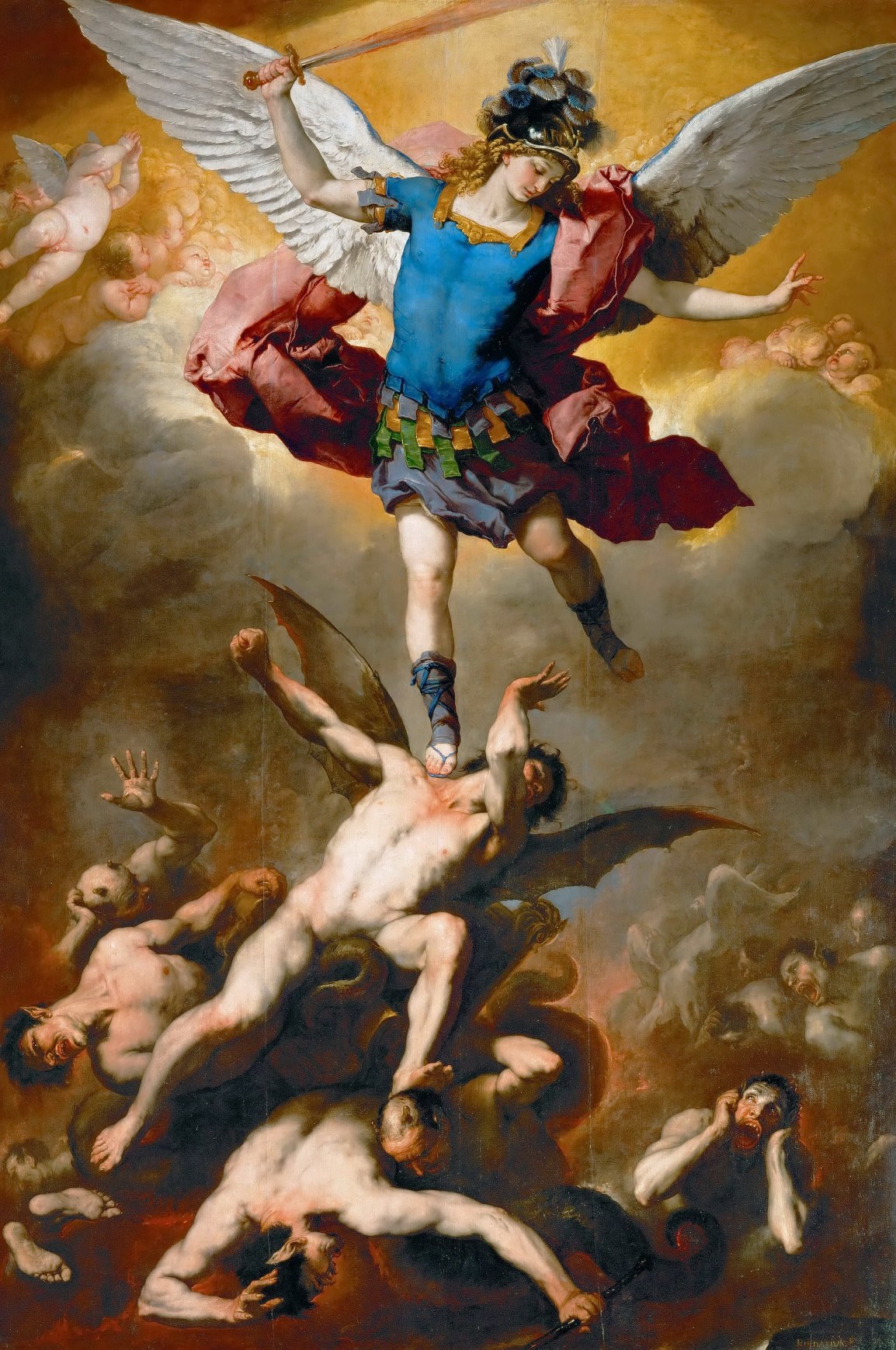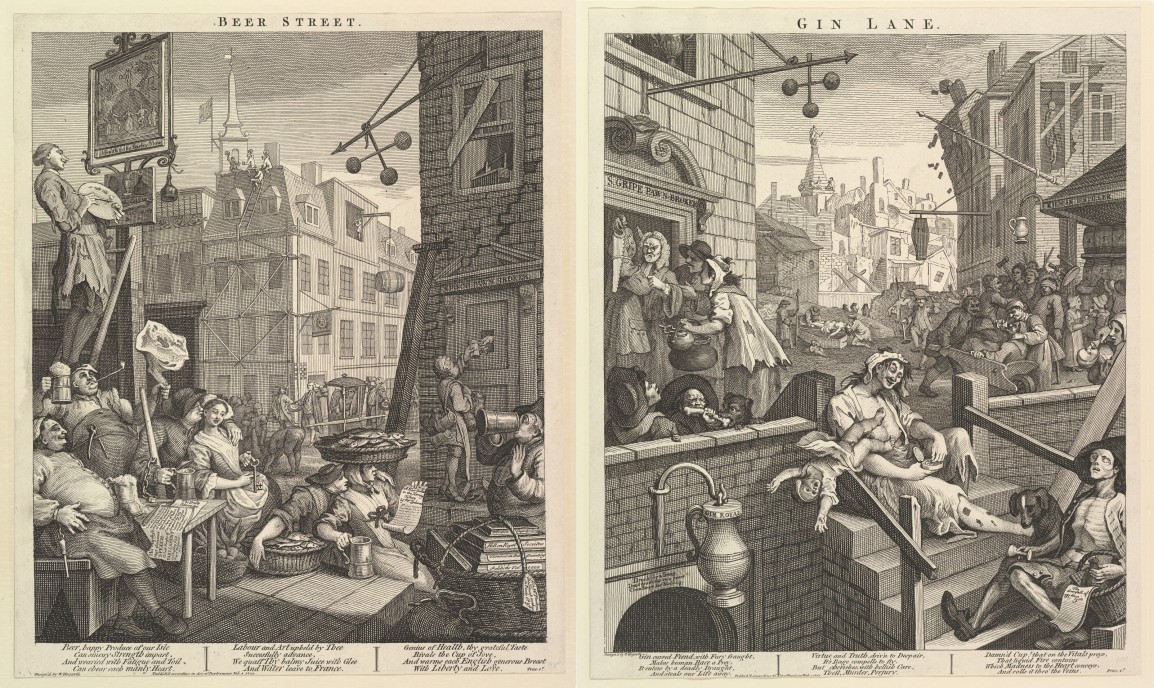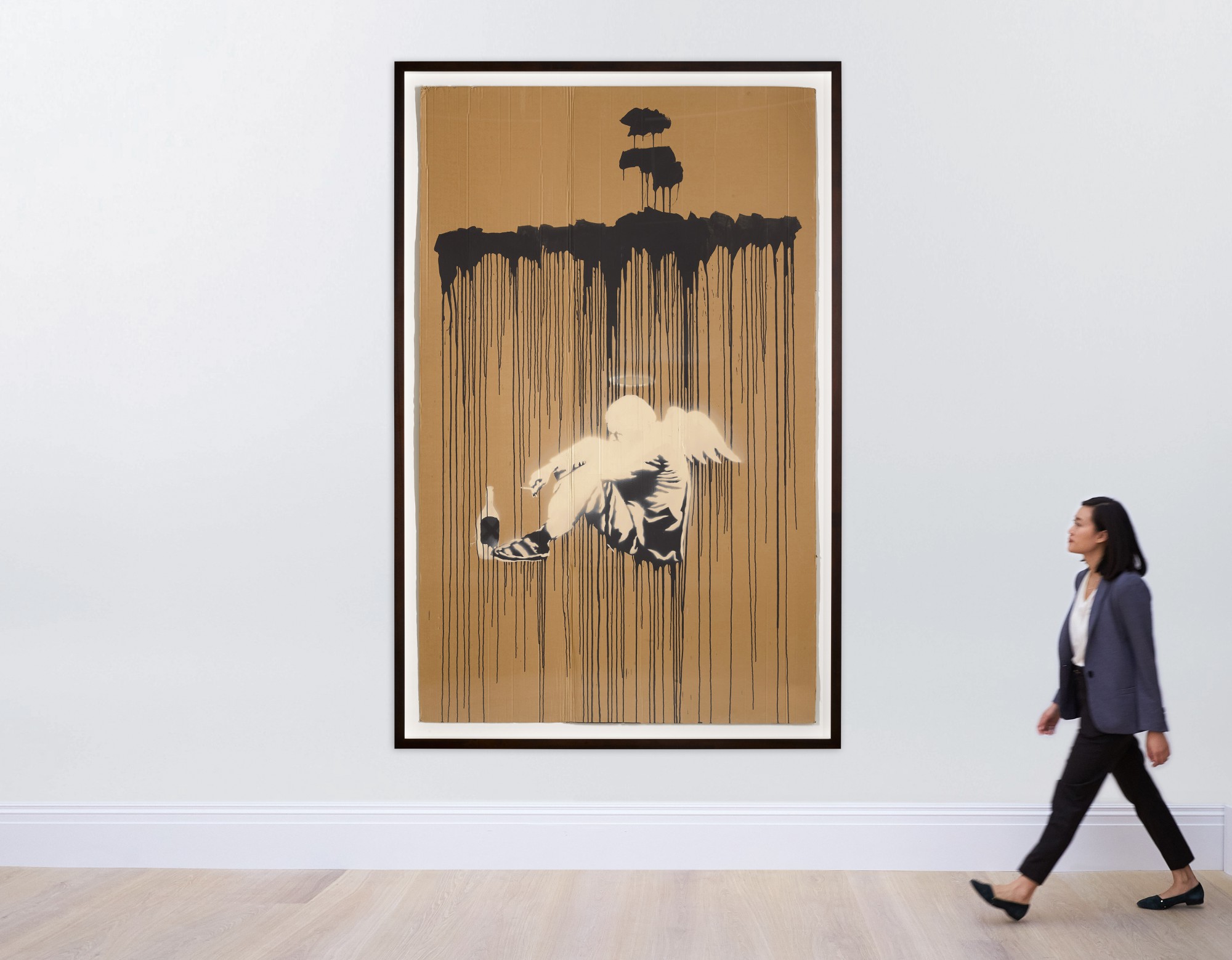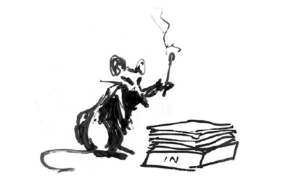
Fallen Angel, 2004
Spray-paint and emulsion on cardboard
246x154cm (96 7/8 x 60 5/8 inches)
Unique
Sotheby’s London: 1 July 2021
Sotheby’s London: 1 July 2021
Downtrodden, seemingly disheveled and out of luck, Fallen Angel depicts a male in tracksuit bottoms sat next to a bottle of alcohol, smoking a cigarette. Stenciled in a luminous white spray paint with punctuations of black emulsion, Banksy has adorned the anonymous man with a halo and angel wings. Painted above the protagonist, a quasi-Christian cross – broken, deconstructed and dramatically dripping down the cardboard – showers the man, whose body language appears exhausted and defeated. The inky pools of black fall like prison bars, perhaps a nod to the socio-political circumstances that have caused this man to lose his way, denied help, relief or progression for a more prosperous future.

Fallen Angel refers to the downfall of something that was once considered good, pure and wonderful, be it a person, society or civilization. In Christian mythology, a fallen angel is one who has ignored God’s will; who has sinned and been cast down to Earth from the War in Heaven. Some critics have interpreted Banksy’s Fallen Angel motif as an anti-religious statement, however, more universally, the present work democratically suggests that any soul has the capability and potential to fall from grace.

LUCA GIORDANO, THE FALL OF THE REBEL ANGELS, CIRCA 1666, KUNSTHISTORISCHES MUSEUM, VIENNA
Banksy’s immediately recognizable guerrilla-styled stencil approach is largely inspired by French stencil artist Blek Le Rat, who had first encountered graffiti in New York City in the 1980s when Keith Haring and Jean-Michel Basquiat were actively tagging the streets. Heralded for adapting the concept of street art to a European tradition of stenciling political statements in the city streets, Blek was originally known for stenciling a large graphic image of a rat on the streets of Paris, which to him symbolize both freedom and the dissemination of art through the city as if it were a plague. Blek later produced a series of politically charged works depicting homeless people and those begging, in order to shine a light on the issues of poverty in Paris. In a similar vein, Banksy was influenced by the city in which he grew up. In the 1970s Bristol was still largely a bombed wasteland following its destruction during the Second World War, in which a significant demographic shift resulted in the working-class community moving out of the city center. Subsequently, after Britain was rocked by civil unrest and economic turmoil in the 1980s, desolation descended on the United Kingdom and as a result Bristol continued to suffer from industries being closed, unemployment, riots, poverty and widespread homelessness.

WILLIAM HOGARTH, BEER STREET AND GIN LANE, 1751
Indeed, Banksy understands his lineage as a social commentator and satirist and – much like Honoré Daumier and William Hogarth before him – uses the power of familiar symbols juxtaposed with incompatible references to create absurd and provocative images which convey potent political messages. Satire does not need to single-handedly dismantle an ideology for its employment to be deemed a success. Rather, the identification of previously hidden or disguised oppressive concepts by audiences is a success in the expansion of social consciousness. Indeed, drawing into the realm of visibility those on the margins of society that are considered helpless and invisible, largely without legal, juridical and visual representation, Banksy successfully infiltrates the social conscious of our nation and continues to be heralded as one of the most celebrated artists of a generation.
Source: Sotheby’s





